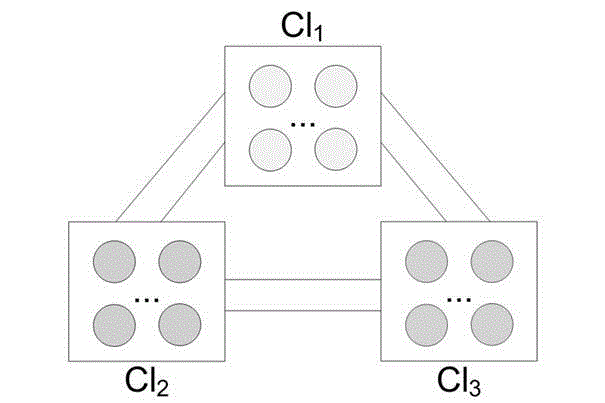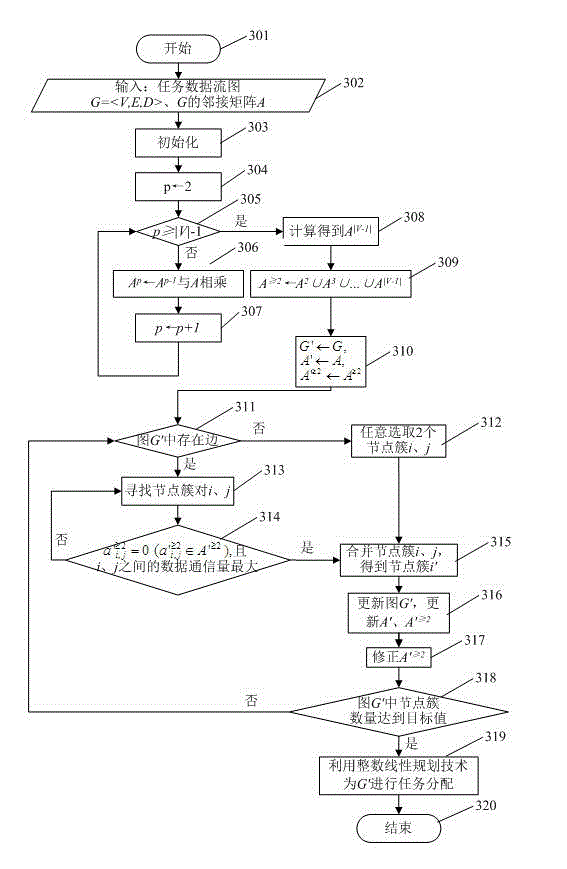Quick task allocation method avoiding deadlock on heterogeneous resource system
A deadlock-avoiding and heterogeneous technology, applied in the direction of resource allocation, multi-program device, etc., can solve the problem of communication dependencies without considering the priority of tasks, minimize total overhead, improve efficiency, and avoid loops produced effect
- Summary
- Abstract
- Description
- Claims
- Application Information
AI Technical Summary
Problems solved by technology
Method used
Image
Examples
Embodiment Construction
[0016] The idea of the present invention is to merge the nodes of the task data flow graph into node clusters. But if there is a cycle in the new task data flow graph composed of node clusters, deadlock may occur in the task scheduling process. In the directed acyclic task data flow graph, the necessary condition for generating a cycle after merging two nodes into a node cluster is that there is a path greater than or equal to 2 between the above two nodes. After performing geometric operations on the adjacency matrix, a new matrix can be obtained, and whether there is a path with a certain length between nodes can be determined through the matrix elements in the new matrix. In this regard, we give a series of definitions, theories, and mathematical proofs.
[0017] It is an existing technical means to represent an application task using a task data flow graph. References include: Shao ZL, Zhuge QF, Xue C, Sha HM. Research on Efficient Allocation and Scheduling on Heterogen...
PUM
 Login to View More
Login to View More Abstract
Description
Claims
Application Information
 Login to View More
Login to View More - R&D
- Intellectual Property
- Life Sciences
- Materials
- Tech Scout
- Unparalleled Data Quality
- Higher Quality Content
- 60% Fewer Hallucinations
Browse by: Latest US Patents, China's latest patents, Technical Efficacy Thesaurus, Application Domain, Technology Topic, Popular Technical Reports.
© 2025 PatSnap. All rights reserved.Legal|Privacy policy|Modern Slavery Act Transparency Statement|Sitemap|About US| Contact US: help@patsnap.com



